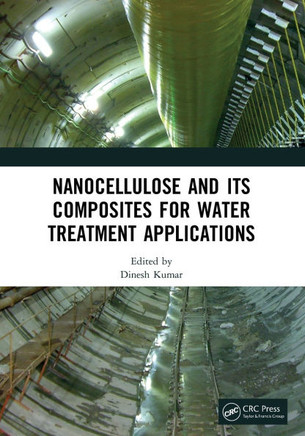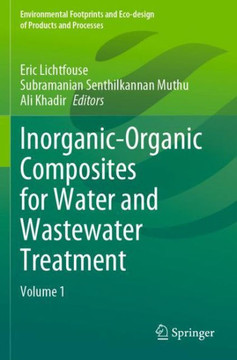
CRC Press
Nanocellulose and Its Composites for Water Treatment Application
Product Code:
9781032023373
ISBN13:
9781032023373
Condition:
New
$67.93

Nanocellulose and Its Composites for Water Treatment Application
$67.93
Biological materials and their applications have drawn increasing attention among scientists. Cellulose is an abundant, renewable, biodegradable, economical, thermally stable and light material and has found application in pharmaceuticals, coatings, food, textiles, laminates, sensors, actuators, flexible electronics, and flexible displays. Its Nano form has extraordinary surface properties like higher surface area than cellulose; hence, nanocellulose can be used as a substitute for cellulose. Hence, among many other sustainable, functional nanomaterials, nanocellulose is attracting growing interest in environmental remediation technologies because of its many unique properties and functionalities. Nanocellulose and Its Composites for Water Treatment Application, first edition supplies insight into the application of nanocellulose and its nanocomposites for water purification and remediation. It covers different classes of nanocellulose-cellulose nanocrystal (CNC), microfibrillated cellulose (MFC), hairy cellulose nanocrystalloid (HCNC) and bacterial nanocellulose (BNC), for their competency with other renewable and carbonaceous materials like pectin, alginate, CNTs. Future perspectives of nanocellulose, and nanocomposites obtained from different biodegradable origins are also discussed. This book provides both a description of fundamentals and an up-to-date overview of development in synthesis, characterization methods, properties-chemical, thermal, optical, structural, surface, and mechanical structure-property relationships, crystallization behavior, degradability of biodegradable nanocomposites. This book also gives an overview of different cellulose nanomaterials and their applications such as adsorbent-adsorption of organic and inorganic toxicants in aqueous media, membrane-bacteria, virus, and ionic impurities, and desalination as photocatalyst-to improve the degradation rate of organic pollutants, and as sensor-to sense water toxicants. Some key features to note are: the details of synthesis and characterization methods of Nanocellulose; the application of nanocellulose and its nanocomposites can be explored by academia, researchers and engineers working in water treatment and purification; in-depth account of the various types of properties of Nanocellulose and its composites; emerging trends in the use of Nanocellulose as adsorbents, sensors, membranes, and photocatalysis materials
| Author: Dinesh Kumar |
| Publisher: CRC Press |
| Publication Date: Oct 07, 2024 |
| Number of Pages: NA pages |
| Language: English |
| Binding: Paperback |
| ISBN-10: 1032023376 |
| ISBN-13: 9781032023373 |





